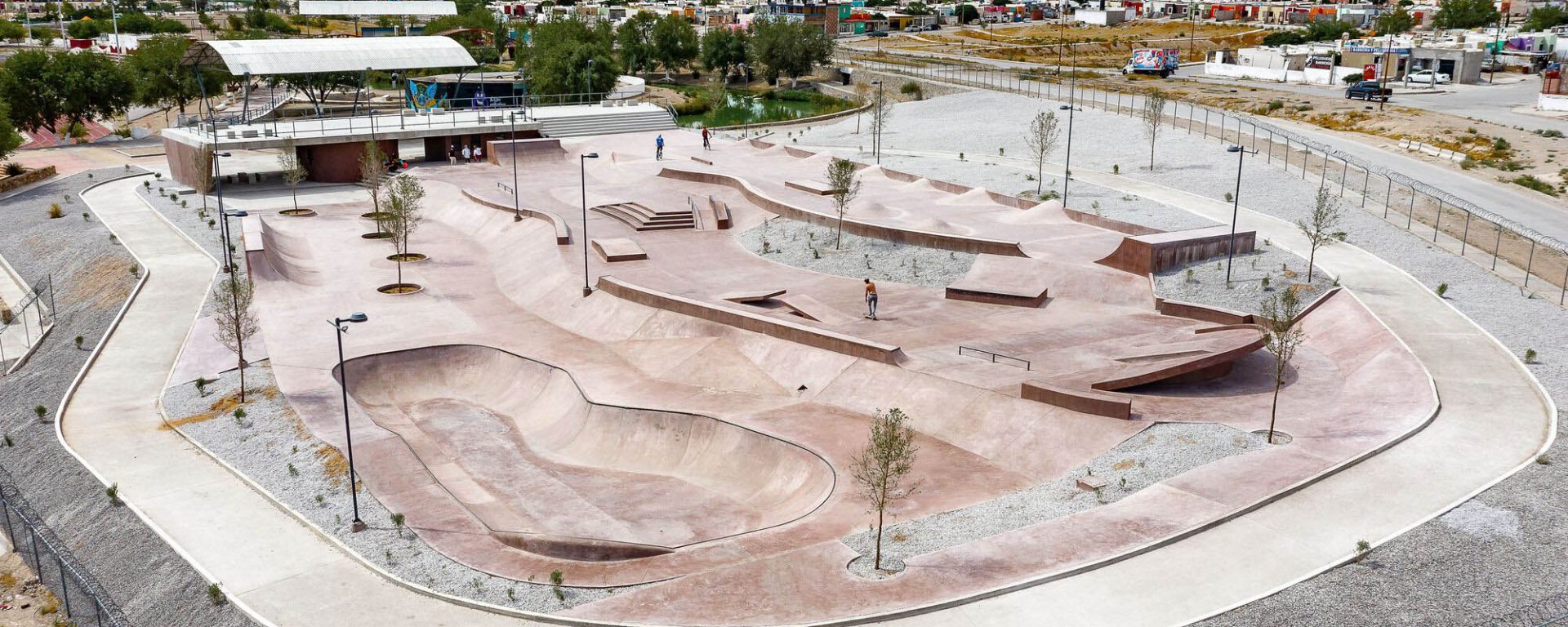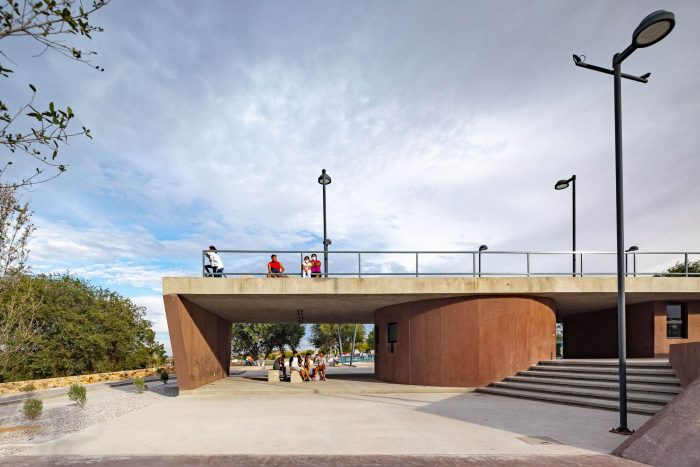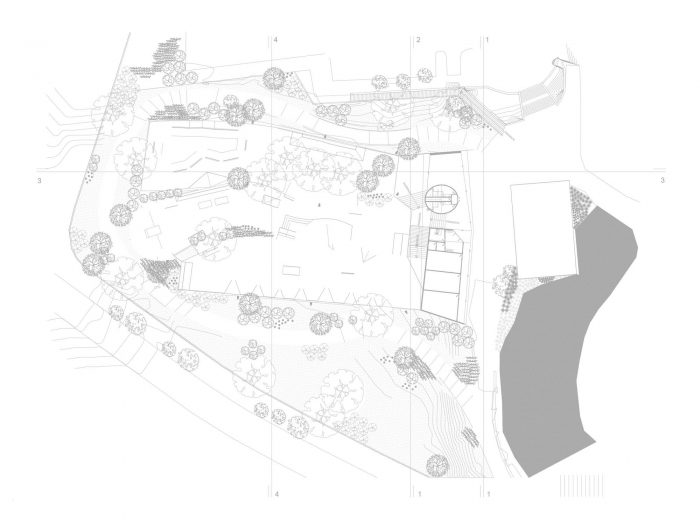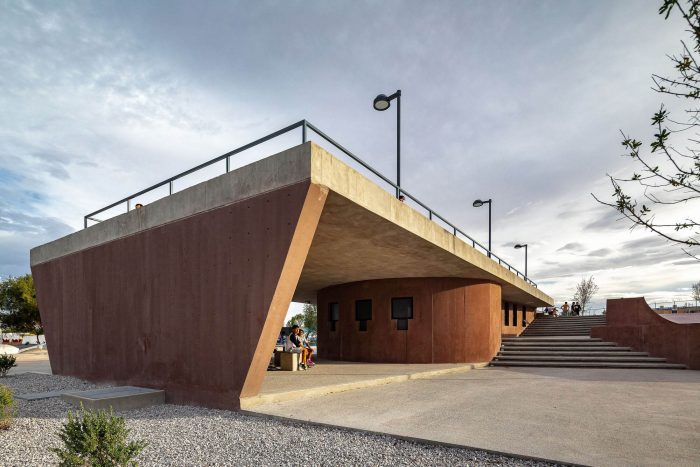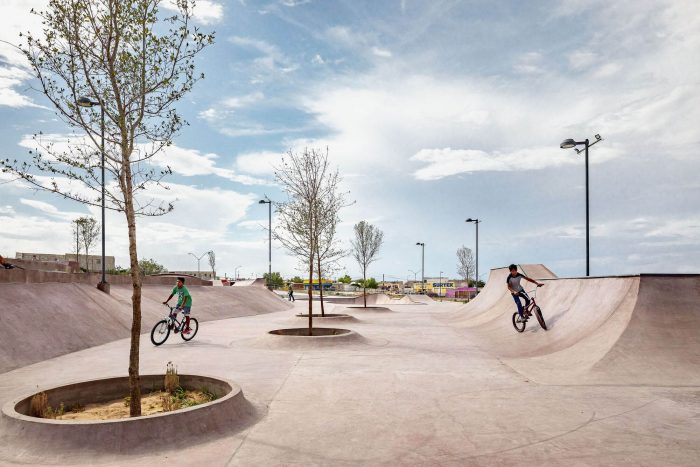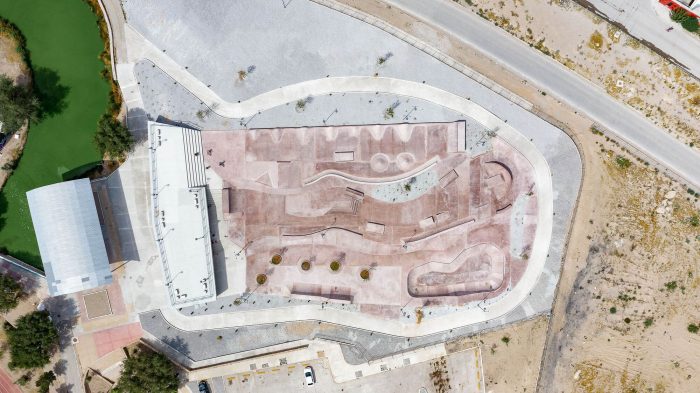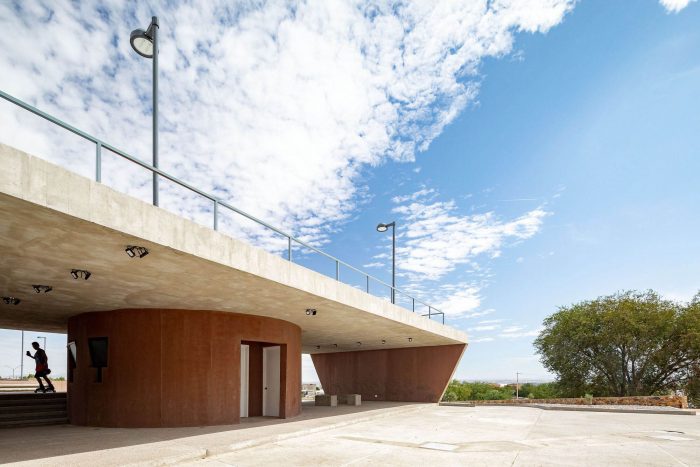2019年,墨西哥农业、国土和城市发展部通过城市改善计划选择华雷斯市作为16个拥有边缘化社区的城市之一,以建设公共空间来改善居民的生活质量。在城市东部的一个高度边缘化的地区,Tierra Nueva社区,其特点是由国家提供的住房区,在这里共存着一个移民社区,他们来到这个城市,在当地工业中寻找更好的工作。在这种情况下,东方公园(Parque Oriente)是一个市政公园,为发展体育和娱乐活动、家庭融合、接触自然提供了必要的空间,其设施可供5000多名游客使用。因此,这个空间成为吸引周围社区的儿童、青少年和年轻人寻找乐趣和身体活动的地方。
In 2019 the Mexican Ministry of Agrarian, Territorial and Urban Development through the Urban Improvement Program chose Ciudad Juarez as one of the sixteen cities with marginalized neighborhoods to build public spaces to improve the quality of life of their inhabitants. In an area of high marginalization to the east of the city, the Tierra Nueva neighborhood, characterized by being a housing area provided by the state, where a community of migrants coexists who come to this city in search of a better job in the local industry. In this context, Parque Oriente, a municipal park, is the meeting point that provides the necessary space for the development of sporting and recreational activities, family integration, contact with nature, with facilities to serve more than 5000 visitors. Thus, this space becomes the place of attraction for children, adolescents, and young people from surrounding neighborhoods in search of fun and physical activation.
在公园的北区,最初考虑的是提供艺术教学服务,在设计邻里花园的命令下,墨西哥国立自治大学建筑学院的工作团队决定为不同年代的人建立一个沉思和互动的空间,开展娱乐和体育活动,不同年龄的人可以进行户外娱乐活动。在这些活动的中心是滑冰,这项运动在城市的年轻人中越来越有兴趣,因为在这个地区有很多追随者,而且目前附近没有练习的空间。
With the task of complementing this offer, in the northern section of the park, where it was initially contemplated to provide arts teaching services and under the order of designing a neighborhood garden, the work team of the School of Architecture of the National Autonomous University of Mexico decided to establish a space for contemplation and interaction for different generations with recreational and sports activities, where people of different ages could perform outdoor entertainment activities; in the center of these activities would be Skating, a sport that is gaining interest among the youth of the City since in this area it has many followers and currently does not have nearby spaces to practice it.
该项目由景观设计师Valia Wright和Eduardo Peón以及建筑师Francisco Elías协调,他们与城市规划师、当地建筑师和社会学家一起,将了解这部分公园与周围社区的关系作为主要目标,同时带来一点奇瓦瓦沙漠的自然背景,作为对该地区自然遗产的一种认可。
The project was coordinated by landscape architects Valia Wright and Eduardo Peón and architect Francisco Elías, who together with urban planners, local architects, and sociologists, established as their main goal to understand the relationship between this section of the park with the surrounding neighborhood, and at the same time bring a bit of the natural context of the Chihuahua desert, as a form of recognition of the natural heritage of the zone.
奇瓦瓦沙漠的景观,特别是萨马拉尤卡沙丘是构思这个空间物体的自然参照物,它是一个连续的作品,栖息在地面上,将滑冰场与行政大楼和工作室的教室结合起来。
The landscape of the Chihuahua desert, particularly the Samalayuca dunes is the natural reference for the conception of this space object, a continuous piece that perches on the ground and combines a skating rink with an administration building and classrooms for workshops.
该建筑被设想为一个洞穴,通过一个保护服务模块的门廊,一个办公室和三间教室,将有盖的广场和滑冰场联系起来,这些教室可以俯瞰湖面,并可与广场一起使用。在上层,有一个观景台,可以用作观察站和其他与滑冰场有关的活动。服务区突出了浴室模块的圆柱形和其他建筑细节,这些细节参考了该地区游牧民族的建筑。最后,带有三柱模块的门廊的形状是对50和60年代华雷斯市城市景观特点的建筑的点头。
The building was conceived as a cave by which the covered square and the skating rink communicate, through a portico that protects the service module, an office, and three classrooms, which overlook the lake and can be used together with the square. On the upper floor, there is a viewpoint, which can be used as an observatory and for other activities related to the skating rink. The services area highlights the cylindrical shape of the bathroom module and other architectural details that refer to the architecture of the Nomadic peoples of the zone. Finally, the shape of the portico with the triple column modules is a nod to the architecture of the 50s and 60s that characterized the urban landscape of Ciudad Juárez.
在滑冰场的周边,建造了一条自行车道的延伸,以连接公园的其他部分和停车场,将拉杜纳滑冰场融入这个休闲空间的自然路线。为了实现这个空间的物质化,选择了高科技混凝土,以实现光滑和连续的表面,其颜色与奇瓦瓦沙漠的沙子完美融合。
On the perimeter of the skating rink, an extension of a bike lane was built to connect with the rest of the park and parking areas, integrating La Duna Skatepark into the natural route of this recreational space. For the materialization of this space, high-tech concrete was selected to achieve a smooth and continuous surface with a color that perfectly integrates with the sand of the Chihuahua desert.
Architects: Eduardo Peón , Elías Group, Oficina de Vinculación UNAM, Valia Wright
Area: 92570 ft²
Year: 2020
Photographs: Onnis Luque
Manufacturers: AutoDesk, GCC, Microsoft Office
Lead Architect: Milton Durán
Landscape:Eduardo Peón
Consultants:Edgar Rico
Collaborators:Laura Jaloma, Paulina Carrillo, Carolina Elías, Mauricio Elías
Clients:Studio Francisco Elías
Design Team:SEDATU
City:Ciudad Juárez
Country:Mexico

